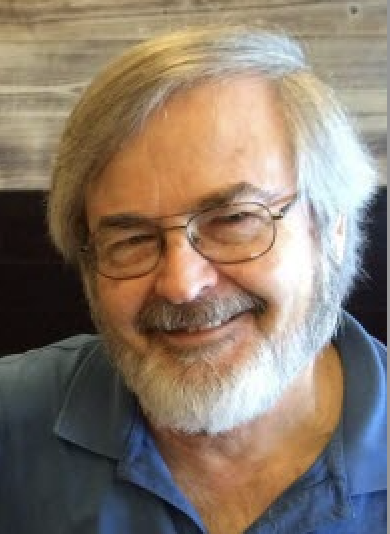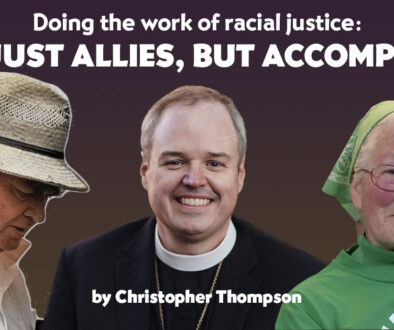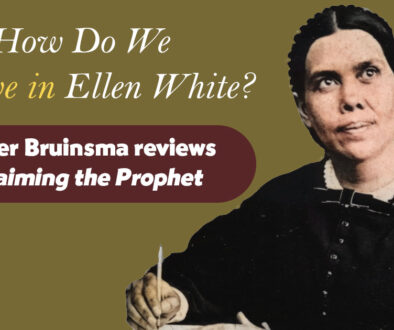Pleasant Truth
by Rich Hannon | 26 January 2024 |
Adventism was born and raised with the self-image that we are a band of plucky truth-seekers.
That’s not wrong, but neither is it wholly true.
Over time, and certainly at present, the church seems to be less about seeking and more about preserving current orthodoxy. There is a phrase used extensively in our subculture: Present Truth. It intends to identify Adventist beliefs as both normative and relevant for today.
But our historical identity suggests we have already found the truths that need to be used in God’s cause to evangelize the world. This idea that we have what others haven’t runs the risk of triumphalism, defined as the confidence that a particular doctrine, culture, or social system, particularly a religious one, is superior and it will or should triumph over all others.
Feeling that you are part of a theological “in crowd” is obviously pleasant. You’ve done the smart thing in joining and supporting the organization that embodies these truths. So, you’re smart generally, while those who haven’t yet figured out what the truth really is, well, they’re not as quick and thoughtful as you are. That’s the Triumphalist mindset, and it certainly isn’t ubiquitous within Adventism. But it’s there nonetheless, and anyone who has lived within our subculture for long has likely seen it on display. It’s “pleasant truth.”
But whenever someone adopts all or part of a worldview, there is an inevitable, accompanying problem. What if these beliefs get challenged? That could threaten your intellectual and emotional stability. So this dissonance is frequently resisted. Ambiguity is not pleasant.
Confirmation bias
There is a well-researched concept in psychology known as confirmation bias. The phrase is nominally defined as a tendency to search for, interpret, favor, and recall information in a way that confirms or supports one’s prior beliefs or values.
This disposition is ubiquitous in humanity. It’s also usually pragmatic. No one can, on-the-spot, re-evaluate the myriad of choices we must make every day. So, we default to what our conceptual universe has previously affirmed.
But, however useful and justifiable, there are limitations, and thus problems to consider. Slavish adherence to what you’ve historically considered normative will also inhibit you from learning and changing. It assumes you’ve arrived at optimality. But as unpleasant as it might be to recognize, our experience also tells us we too often do make mistakes.
And some of these mistakes aren’t the failure to operate successfully in accordance with our present world view understanding. Some are because what we thought was truth, has become irritatingly problematic, and possibly wrong. Thus dissonance appears, whether we like it or not. And there is a real tendency for us to suppress it. Our cognition is biased in favor of confirming historical beliefs.
Falsification
The core problem in confirmation bias is failure to adequately examine the evidence with intent to falsify. That is, we tend to “cherry pick” information favoring our beliefs, but ignore that which might prove them false.
This occurs in every context, not just in religion. One interesting example comes from science, where something called the “file-drawer effect” has been identified. This is where a researcher is biased to favor publishing something that seems new and interesting, rather than publish information that might disconfirm some hypothesis that otherwise could break new ground. See, if you put in work, only to determine that apparently nothing novel has occurred, then that seems unworthy of publication. And it doesn’t move the needle for your career. So, you “file” it away, and don’t make others aware of it. Yet such information could assist in an appropriate rejection of the hypothesis being considered. And why wouldn’t such disconfirmation be valuable? Isn’t it important to discard an idea that isn’t true? Consequently, this tendency can interfere with choosing to publicize such seemingly uninteresting results.
But notice that this file-drawer inclination can also have a cherry-picking, heartening effect on a believer who is invested in denigrating science generally. For example, in a desire to support Young Earth Creationism, which science disparages. “Ah, see, science is biased, right? They only publish selective results. Those guys must be suppressing all the proofs really out there that would undermine their cherished, atheistic theories!” So one bias can give aid and comfort to another bias. Such a tangled web we weave.
Humanity seems to almost continually live in a “dance” regarding the evaluation of ideas. Is something true? Am I invested in it being true? Am I fairly weighting disconfirming evidence? Much too often this is done subconsciously, with mixed emotions of explorative excitement and corresponding unease.
Examples from religious life
Confirmation Bias is especially attractive in the Adventist subculture. As I’ve noted above, we’ve grown up with the affirmation that we have The Truth. Seeking is past; we have arrived. This explains, in part, the mindset of many current denominational leaders, exemplified by church president Ted Wilson’s efforts to “circle the wagons” around current orthodoxy, and seek to identify and squeeze out dissent. But, whether or not current orthodoxy needs any modification, it is important and healthy to recognize the trap of Confirmation Bias. So, what might be a few examples of contexts?
Eschatological belief
Adventists historically have evangelized by trying to alert society that the “end is near.” Thus, referencing current events factors into that effort. Matthew 24 tells us there will be “wars and rumors of wars … Nation will rise against nation … There will be famines and earthquakes …” And we see all these things today. Obviously, we’re nearing the end, right? The trouble is, none of this is new. There have always been earthquakes, wars, famine, etc. The reporting of such occurrences is far better these days, but if you seek a trend of escalation–which might indicate the end really is nearing–the results are more ambiguous than confirmatory. Yet, it’s quite tempting to ignore any evidence that might lean into falsification. It would destabilize our comfort in “knowing” the future.
God’s involvement in the world
Often, when a believer sees something positive in the world, God gets the credit. But if something bad happens, God likely gets a “pass.” So, if your car swerves on black ice but you escape unharmed, a little prayer might be offered. Nothing wrong there. But what about a private plane crash where some friends or loved ones die? Well, that’s another matter. What’s going on here, more generally, is an inadequate response to the Problem of Evil. This term is applied to the conundrum of why God, who is all-powerful and all-loving, too often fails to act in response to some moral or natural evil. Rather than trying to wrestle with this deep and vexing problem, we operate “asymmetrically” in our beliefs regarding God’s involvement in the world. Praise God for the good, don’t blame God for the bad. But we sense an uncomfortable difficulty here. And this very philosophical asymmetry can destroy faith, if the problem is left unrecognized and unattended to, when something that is potentially faith-shattering, happens to you.
The church “bubble”
Adventism is significantly centered in the local church experience, plus any consumption of denominational information, whether in print or online. And there never has been much disconfirmatory material in any church-centric experience, Adventist or not. This is normal, but that doesn’t make it balanced. So, you sit through Sabbath School, and what will you get, both in the Lesson Guide and discussion? Probably heavy emphasis on current orthodoxy. Again, unsurprising and generally benign. But mostly corroboration on display, so problematic aspects are not going to be considered. Ironically, if the participants were more candid, you might find that some reservations you have also trouble others. Yet there is frequently an inhibition to voice questions, risking falsification.
Objectivity and faith
It might seem, so far, that I am surreptitiously engaged in promoting disbelief. This essay has been mostly diagnostic, suggesting we humans are prone to mistaken beliefs because we fail to adequately seek counter-evidence. That’s true, but it doesn’t follow that we must, in consequence, discard faith as being unsupportable. That’s a temptation if/when some components of a belief structure cannot be sustained. There can then be a slippery-slope fear that our world view will eventually be dismantled completely, pillar by pillar, leaving us drowning in nihilism.
We are never going to reach complete objectivity. To do so we would need a God’s eye view. But we can recognize the human tendency to evade reconsideration of a belief, if it fails truth-tests over time. We like to think that’s what we’re doing daily, yet we all still have blind spots, perhaps undiscovered over a lifetime. The best we can do is to seek for and uncover belief weaknesses, then try to mitigate them.
So much of the faith experience occurs in the realm of what is sometimes labeled “private knowledge.” That is, experience we have personally but has no external visibility, thus cannot be confirmed by others. Such “knowledge” could be bogus and needs our thoughtful consideration. But its public unverifiability does not invalidate it. Any human-God interaction will almost necessarily be private. Unless you observe some public miracle, you come to, and sustain faith, with an internal mixture of intellect and feeling. None of which needs to be rejected. But there is danger in grounding our faith on ideological “sinking sand” (Matt. 7:24-27), and it is deeply uncomfortable to do the necessary introspection to try and separate this sand from solid rock.
 Rich Hannon is a retired software engineer. His long-standing avocations include philosophy, geology, and medieval history.
Rich Hannon is a retired software engineer. His long-standing avocations include philosophy, geology, and medieval history.




